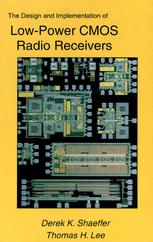

Most ebook files are in PDF format, so you can easily read them using various software such as Foxit Reader or directly on the Google Chrome browser.
Some ebook files are released by publishers in other formats such as .awz, .mobi, .epub, .fb2, etc. You may need to install specific software to read these formats on mobile/PC, such as Calibre.
Please read the tutorial at this link: https://ebookbell.com/faq
We offer FREE conversion to the popular formats you request; however, this may take some time. Therefore, right after payment, please email us, and we will try to provide the service as quickly as possible.
For some exceptional file formats or broken links (if any), please refrain from opening any disputes. Instead, email us first, and we will try to assist within a maximum of 6 hours.
EbookBell Team

4.7
66 reviewsIt is hardly a profound observation to note that we remain in the midst of a wireless revolution. In 1998 alone, over 150 million cell phones were sold worldwide, representing an astonishing 50% increase over the previous year. Maintaining such a remarkable growth rate requires constant innovation to decrease cost while increasing performance and functionality. Traditionally, wireless products have depended on a mixture of semicond- tor technologies, spanning GaAs, bipolar and BiCMOS, just to name a few. A question that has been hotly debated is whether CMOS could ever be suitable for RF applications. However, given the acknowledged inferiority of CMOS transistors relative to those in other candidate technologies, it has been argued by many that “CMOS RF” is an oxymoron, an endeavor best left cloistered in the ivory towers of academia. In rebuttal, there are several compelling reasons to consider CMOS for wi- less applications. Aside from the exponential device and density improvements delivered regularly by Moore’s law, only CMOS offers a technology path for integrating RF and digital elements, potentially leading to exceptionally c- pact and low-cost devices. To enable this achievement, several thorny issues need to be resolved. Among these are the problem of poor passive com- nents, broadband noise in MOSFETs, and phase noise in oscillators made with CMOS. Beyond the component level, there is also the important question of whether there are different architectural choices that one would make if CMOS were used, given the different constraints.